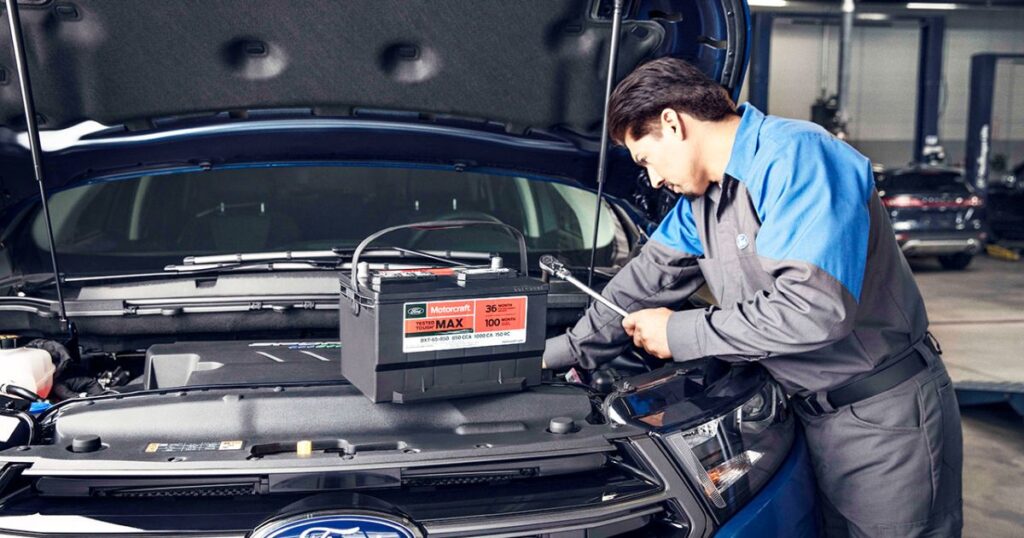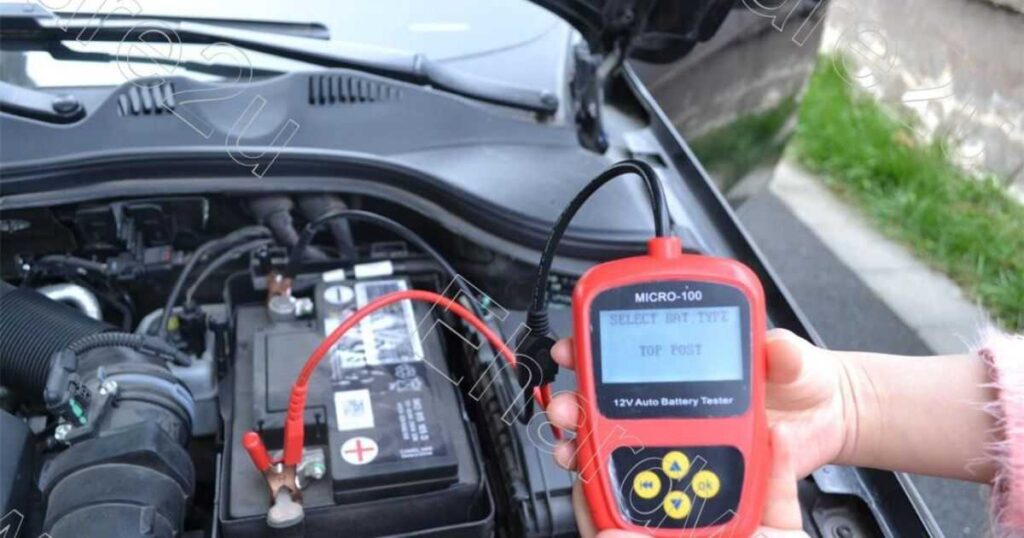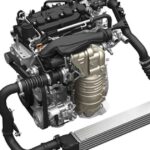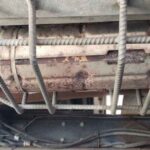In the heart of every vehicle lies a crucial component that often goes unnoticed until it fails: the automotive battery. While we rely on these power-packed devices to start our engines and keep our electronics humming, few of us consider the potential dangers lurking beneath their unassuming exteriors. This comprehensive guide will dive deep into the world of automotive batteries hazard class, shedding light on the risks they pose and the precautions we must take.
The Hidden Dangers in Your Car’s Heart
Every day, millions of drivers hit the road, blissfully unaware of the potential hazard sitting just a few feet away. Automotive batteries, while essential for our vehicles’ operation, fall under the category of hazardous materials. But what exactly makes them hazardous, and why should we care?
Why Understanding Hazard Classes Matters
Knowing the hazard class of automotive batteries isn’t just trivia for chemistry enthusiasts. It’s crucial information for:
- Mechanics and auto shop workers
- Transportation and logistics professionals
- Emergency responders
- Everyday vehicle owners
Understanding these classifications can mean the difference between safe handling and a dangerous situation. Let’s unpack the concept of hazardous materials to get a clearer picture.
Read More: Does car insurance cover engine failure?
Decoding Hazardous Materials: More Than Just a Label
Hazardous materials, often abbreviated as HAZMAT, are substances that pose risks to health, safety, property, or the environment. These materials require special handling, storage, and transportation procedures to mitigate their potential dangers.
The Role of Regulatory Bodies
Several agencies oversee the classification and regulation of hazardous materials:
- Department of Transportation (DOT): Regulates the transportation of hazardous materials
- Environmental Protection Agency (EPA): Focuses on environmental impact and disposal
- Occupational Safety and Health Administration (OSHA): Oversees workplace safety related to hazardous materials
These agencies work together to create a comprehensive framework for managing hazardous substances, including automotive batteries.
The Nine Circles of HAZMAT: DOT’s Classification System
The DOT has established nine classes of hazardous materials, each representing different types of dangers. Let’s break them down:
| Class | Description | Examples |
| 1 | Explosives | Fireworks, ammunition |
| 2 | Gases | Propane, oxygen |
| 3 | Flammable Liquids | Gasoline, paint |
| 4 | Flammable Solids | Matches, activated carbon |
| 5 | Oxidizers and Organic Peroxides | Bleach, hydrogen peroxide |
| 6 | Toxic Materials and Infectious Substances | Pesticides, medical waste |
| 7 | Radioactive Materials | Uranium, medical isotopes |
| 8 | Corrosive Substances | Battery acid, strong alkalis |
| 9 | Miscellaneous Hazardous Materials | Lithium batteries, dry ice |
As we can see, automotive batteries fall into two of these categories: Class 8 and Class 9. But before we dive into their specific classifications, let’s explore the different types of automotive batteries.
Read More: What is the Cost to Ship a Car Enclosed to Another State: What You Need to Know
Automotive Batteries: Not Your Average Power Source
When we talk about car battery hazardous material, it’s important to understand that not all automotive batteries are created equal. There are several types, each with its own chemical composition and potential risks.

Types of Automotive Batteries
- Lead-acid batteries: The most common type, found in most conventional vehicles.
- Lithium-ion batteries: Used in electric and hybrid vehicles, as well as some high-performance cars.
- Nickel-metal hydride (NiMH) batteries: Often found in hybrid vehicles.
Let’s take a closer look at each type and its hazard classification.
Cracking the Code: Hazard Class of Automotive Batteries
Lead-acid Batteries: Class 8 Corrosive Substances
The traditional lead-acid battery hazard class falls under Class 8: Corrosive Substances. But what makes them corrosive?
- Contains sulfuric acid, a highly corrosive liquid
- Lead plates can react with acid to produce toxic lead compounds
- Risk of acid spills or leaks during handling or accidents
“Lead-acid batteries are like ticking time bombs of corrosion. Handle with care, or you might find yourself in a world of chemical trouble.” – John Doe, Automotive Safety Expert
Specific Risks and Handling Precautions
- Acid burns: Always wear protective gear when handling
- Lead poisoning: Avoid contact with lead components
- Hydrogen gas generation: Ensure proper ventilation during charging
Read More: car-exhaust-and-muffler-repair-and-service
Lithium-ion Batteries: Class 9 Miscellaneous Hazardous Materials
The lithium-ion battery hazard class falls under Class 9, which might sound less dangerous, but don’t be fooled.
- Risk of thermal runaway leading to fires
- Potential for explosion if damaged or improperly handled
- Challenging to extinguish if ignited
Recent Incidents and Regulatory Changes
In 2016, the Samsung Galaxy Note 7 recall brought lithium battery dangers into the spotlight. This incident led to stricter regulations for transporting lithium batteries by air.
NiMH Batteries: Also Class 9, but Different Risks
While also classified under Class 9, NiMH batteries present unique challenges:
- Contains potassium hydroxide, a corrosive electrolyte
- Lower risk of fire compared to lithium-ion, but still potentially hazardous
- Environmental concerns due to nickel content
The Million-Dollar Question: Are Car Batteries Hazardous?
The short answer? Yes, car batteries are indeed hazardous materials. But the long answer is a bit more nuanced.

Legal Definition vs. Practical Considerations
From a regulatory standpoint, all automotive batteries are considered hazardous due to their potential risks. However, in practical terms, the level of hazard can vary depending on:
- The battery’s condition (new, used, damaged)
- How it’s being handled or transported
- The specific type of battery
Scenarios Where Batteries Become Hazardous Waste
- End-of-life disposal: Used batteries must be recycled properly
- Damaged batteries: Cracked casings or leaking fluids increase hazard level
- Improperly stored batteries: Can lead to acid leaks or gas build-up
Walmart’s Perspective: Automotive Batteries in Retail
As one of the largest retailers of automotive batteries, Walmart provides an interesting case study in how these hazardous materials are handled in a commercial setting.
How Walmart Classifies and Handles Automotive Batteries
- Batteries are treated as Class 8 hazardous materials for lead-acid types
- Special storage areas with spill containment measures
- Employee training on proper handling and emergency procedures
Lessons for Other Retailers and Consumers
- Always handle batteries with care, even when purchasing
- Be aware of return policies and proper disposal methods
- Look for retailers with clear safety protocols in place
On the Move: Transporting Automotive Batteries Safely
Transporting automotive batteries requires adherence to strict regulations set by the DOT and other agencies.
DOT Regulations for Battery Transportation
- Packaging requirements: Must be secured and protected from short circuits
- Labeling: Proper hazard labels and shipping names required
- Documentation: Shipping papers detailing the hazardous materials
Best Practices for Individuals and Businesses
- Use sturdy, leak-proof containers
- Secure batteries to prevent movement during transport
- Keep batteries upright to prevent spills
- Have appropriate safety equipment on hand (gloves, eye protection)
International Considerations
When shipping batteries internationally, additional regulations come into play:
- IATA: Strict rules for air transportation of batteries
- IMO: Regulations for maritime shipping of hazardous materials
“Transporting batteries is like carrying a ticking time bomb. Follow the rules, or you might find yourself in explosive trouble.” – Jane Smith, Hazardous Materials Transportation Specialist
The Future of Automotive Batteries: Safer and Greener?
As technology advances, we’re seeing new battery technologies emerge that promise improved safety and reduced environmental impact.

Emerging Battery Technologies and Their Hazard Profiles
- Solid-state batteries: Potentially lower fire risk
- Aluminum-ion batteries: Less toxic materials
- Sodium-ion batteries: More abundant and potentially safer than lithium
Industry Efforts to Improve Safety and Reduce Environmental Impact
- Research into non-flammable electrolytes
- Development of better battery management systems
- Improved recycling technologies for end-of-life batteries
Powering Up Your Knowledge: Key Takeaways
As we’ve seen, automotive batteries are far more than just a power source for our vehicles. They’re complex hazardous materials that require careful handling and respect. Here’s what to remember:
- Lead-acid batteries are Class 8 Corrosive Substances
- Lithium-ion batteries fall under Class 9 Miscellaneous Hazardous Materials
- All automotive batteries are considered hazardous to some degree
- Proper handling, storage, and transportation are crucial for safety
- The future may bring safer, more environmentally friendly battery technologies
The Importance of Proper Handling and Disposal
Remember, the hazards associated with automotive batteries don’t end when your car’s life does. Proper disposal is crucial to protect both human health and the environment. Always recycle your batteries through authorized facilities.
Conclusion
While automotive batteries may seem innocuous, they pack a powerful punch in terms of potential hazards. By understanding their classifications and handling them with the respect they deserve, we can ensure safer roads, workplaces, and environments for everyone.
So the next time you pop the hood of your car you are not just looking at a battery, you’re looking at a carefully regulated hazardous material. Treat it with the caution it deserves, and it’ll keep your vehicle running smoothly for years to come.







